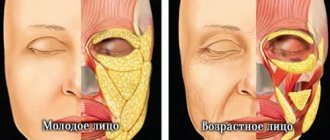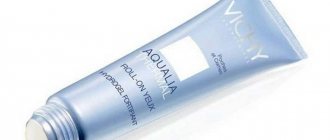- June 25, 2018
- Other states
- Anastasia Berdnikova
There are cases when changes occurring in the body cannot be explained, since the cause of their occurrence has not been identified. One of these problems may be the sudden appearance of bruises on the body without contusions. But in any case, this phenomenon indicates that damage has occurred to the walls of the blood vessels at the site of the bruise. What are the causes of vascular damage and the appearance of bruises on the body without bruises? What causes bruises?
Bruise on the body - what is it?
Bruises on the body are an accumulation of blood under the skin, which is formed as a result of rupture and damage to the walls of small vessels, or rather capillaries. Blood vessels burst under traumatic influence, and blood spreads under the skin. This damaged area appears swollen with discoloration of the skin on it. The bruise is initially red and painful when pressed. After some time, it darkens and turns blue-green or purple. Then, after a certain period of time, the hematoma turns yellow. If these hematomas occur for no apparent reason, this can be a dangerous signal. A bruise on the skin may indicate any blood diseases, improper functioning of internal organs, or a lack of nutrients in the body.
Unreasonable appearance of bruises on the body: causes
One of the reasons for the appearance of bruises may be increased fragility of the capillaries. This phenomenon is called hemorrhagic vasculitis. This reason is the most common. It is an autoimmune disease that is characterized by improper functioning of immune cells in the body. Since these cells protect the body, they begin to perceive the capillaries as a foreign antigen. This causes the cells to begin to produce antibodies that destroy the walls of small blood vessels. For this reason, the vessels become thinner, brittle and fragile. Even with the slightest pressure, the vessels under the skin burst, which, in turn, causes hematomas on the body. If those vessels that are located in the membranes of a person’s internal organs are fragile, then hematomas begin to appear throughout the body except the face.
Bruises on the legs appear due to varicose veins, which is accompanied by stagnation in the leg veins. This causes unnecessary stretching and thinning of the capillary walls.
A very common reason for the appearance of bruises on the body without contusions is vitamin deficiency or hypovitaminosis of vitamins P and C. Because of this, the integrity and function of the capillaries is impaired. Vitamin C deficiency can be eliminated by eating pineapples, gooseberries, tomatoes, strawberries, and rose hips.
Vitamin P hypovitaminosis increases blood pressure and the permeability of blood vessels, which increases the load on them.
If there is an excessive amount of vitamins P and C in the body, there is a lack of calcium in the blood. This thins the blood vessels and increases their fragility.
The main physical factors for the appearance of bruises on the knees
Most often, bruises on the knees appear due to exposure to high physical activity. They do not cause painful sensations; providing the right assistance helps to get rid of an unsightly cosmetic defect in a couple of days.
When we fall, any of us tries to land on our knee. A direct blow causes small capillaries to rupture. The blood from them flows into the surrounding tissues. The result is the appearance of a blue spot on the skin.
There is pathological fragility of blood vessels. In this case, small hematomas appear everywhere, not only on the knees. Large bruises may occur in the designated area after a serious injury that damages the structures of the knee joint.
If bruises on the knees appear without the influence of physical factors, this is a reason to consult a doctor and undergo a full examination.
Cancers
The cause of a hematoma on the body without a bruise can be leukemia, that is, blood cancer. At the same time, the number of platelets, leukocytes and red blood cells in the blood decreases. Reduced blood clotting occurs with a lack of platelets. Because of this, even a very slight bruise can lead to severe and large hemorrhage.
Also, the cause of bruises on the body without contusions may be a decrease in blood clotting. In this case, you need to reconsider your diet. Vitamin K should be taken in increased quantities. It is found in lettuce leaves, nettle infusion and cabbage.
In addition, hematomas also occur due to the following diseases: rheumatism, kidney disease, chronic tonsillitis.
Pathological causes
The easiest way to explain the appearance of bruises on the knees is a lack of vitamins. Some of them are responsible for the elasticity of vascular walls, others for the quality of the blood. If you discover characteristic skin defects, doctors recommend changing your diet and including more foods that contain the following microelements.
- Vitamin "K". Responsible for blood clotting. There is a lot of it in green vegetables and salad leaves. With a shortage or excess of such a microelement, hypovitaminosis develops. It causes the appearance of pinpoint hemorrhages. You can also find them on your knees.
- Vitamin "PP". Normalizes the functioning of the vascular system. This is why nicotinic acid is included in therapeutic regimens used to treat heart disease. There is a lot of it in beef liver, milk and fish, in cheeses and eggs. Including these foods in the diet of a sick person helps get rid of bruises on the knees.
- Vitamin C". Responsible for the elasticity of the walls of hollow tubes. Deficiency leads to fragility of blood vessels. A lot of vitamin is found in all citrus fruits, cabbage, and sweet bell peppers.
Varicose veins
In women, varicose veins are a common cause of bruises under the knees.
It’s easy to recognize its symptoms yourself:
- First, a characteristic vascular network appears on the skin. It occurs when small capillaries begin to become inflamed due to stagnation of venous blood.
- The skin over the lesion becomes dry, flaky and very itchy.
- Patients feel a strong pulsation of the veins under the knee and are bothered by a burning sensation.
- At rest, the lower limbs may experience cramps.
- When walking, your legs get tired quickly.
- Swollen, inflamed veins tend to twist.
- Disruption of normal blood flow leads to the formation of swelling of the legs below the knees.
- The walls of the veins lose their elasticity, bleeding occurs, which leads to the formation of large hematomas.
- The process of palpating the affected areas causes severe pain. It intensifies with any movement.
Based on the nature of the pain, an experienced doctor can determine the severity of the disease. If it becomes continuous, you need to seek help from a phlebrologist. The presence of such a symptom indicates thrombus formation.
Treatment of varicose veins begins with identifying the cause of its development and eliminating the provoking factor of the pathology. Various triggers can give impetus to blood flow disturbances. These include genetic predisposition, prolonged sedentary lifestyle, and work that requires constant standing. Varicose veins often develop in pregnant women, in people who are overweight or have hormonal imbalances.
You can eliminate symptoms by using compression hosiery, using medications that help eliminate pain, relieve swelling and inflammation, increase the tone of the vein walls, thin the blood and dissolve seals. In advanced cases, the choice of minimally invasive and surgical methods for eliminating damaged areas of veins becomes justified.
Hemorrhagic diathesis
Most often it affects children at an early age. Pathology belongs to the category of vascular diseases that develop after infections. Often, inflammation of the walls of capillaries, veins, veins and arteries occurs as a complication. The patient's body temperature rises, he is bothered by severe chills, nausea, vomiting, and abdominal pain. Small bruises appear on the skin of the lower extremities. Treatment with hormonal drugs helps to quickly stop clinical manifestations and prevent the occurrence of unwanted complications.
Oncological processes
Bruises on the knees that appear without injuries or bruises may indicate the progression of a malignant blood disease (leukemia). Its course causes a decrease in all the constituent elements of biological fluid. A lack of platelets causes the blood to stop clotting. Any minor damage to the skin leads to hemorrhages. In this case, bruises appear not only on the knees, but also on other parts of the body.
Leukemia has other indirect symptoms. The patient always has a slight increase in body temperature (up to 37.5 degrees), he constantly feels tired and complains of general malaise. Very often he is tormented by infectious diseases. Clinical laboratory tests and sternal puncture can confirm the diagnosis. Treatment for blood oncologists is carried out with chemotherapy.
Liver failure
A healthy liver produces substances that affect blood clotting. Any inflammatory processes in this organ worsen the process, so it becomes possible for small hematomas to appear on the legs. Problems with the liver can be noticed by certain symptoms: the skin becomes jaundiced and begins to itch unbearably. A biochemical blood test and ultrasound can help confirm concerns. Liver diseases that cause the development of inflammatory reactions are treated with hepatoprotectors and a restrictive diet. The patient is advised to give up fried, salty, spicy foods, alcohol and smoking.
Connective tissue diseases
Such pathologies belong to systemic diseases. It has many forms of manifestation. Each may be based on inflammatory reactions or autoimmune disruptions, as well as excessive fibrosis formation.
Such ailments include:
- lupus erythematosus,
- scleroderma,
- diffuse fasciitis,
- dermatomyositis,
- Sjögren's syndrome,
- Sharp's disease
- relapsing polychondritis,
- polymyalgia rheumatica,
- rheumatoid arthritis,
- systemic vasculitis.
Each pathology can cause bruises on the knees. The etiology of the symptom is determined using instrumental and laboratory tests. Deciphering them allows us to develop effective treatment tactics.
Bruises in children for no reason
Hematomas in children can form either as a result of their vigorous activity or without any special reason. The cause of bruises on the body without contusions in children may be the diseases mentioned above. Lack of vitamins also plays a role. In addition, hematomas without bruises in children may appear in the following cases:
- Worm infestation.
- Wrong diet.
- Violation of the daily routine.
- Hereditary fragility of blood vessels.
- Thyroid diseases.
- Little physical activity.
Injections can also cause bruises on the body without bruises on the child's skin. Hematomas are provoked by an injection and remain for a long period of time under the following conditions:
- Short needle on a syringe.
- The muscle reacts with spasm.
- Accelerated administration of medication.
- Allergy to the administered drug.
If hematomas appear on a child’s skin, it is imperative to consult a doctor to identify and eliminate the causes. You should pay special attention to the following symptoms of hematomas:
- Dizziness.
- Deterioration of vision.
- High body temperature.
- Difficulty walking or speaking.
- Drowsiness and weakness.
Bruises located on the back, head, back of the arms and in the eye area are very dangerous. In order to remove bruises on the body, you need to consult a doctor and carry out the necessary diagnostic procedures.
“Urgently see a doctor”: a hematologist told us what bruises should not appear on the body of a healthy person
Subcutaneous hematomas are not always associated with dangerous health problems. A small amount of bruising on the body is normal. Most often they appear after bruises. But there are times when you need to urgently consult a doctor. Hematologist Yulia Nenasheva told 5-tv.ru about bruises and tests that will help rule out serious illnesses associated with them.
A bruise is the accumulation of a small amount of blood in the uppermost layers of the skin, which gets there as a result of injuries to small vessels. There are different types of bruises, and by understanding what type a particular bruise is, the doctor can determine the direction of treatment. A hematoma is a more serious injury. This is a cavity filled with blood. She is painful and tense. The hematoma can be deep and extend into the intermuscular space. In such cases, surgery is required.
“Bruises are very common in everyday life. It is believed that they form more often in women, because the hormonal background, the restructuring of which a woman experiences throughout her life, can affect the structure of the vascular wall, can make it more fragile, more brittle, and in fact, with minimal impact, we have a small bruise . But not every bruise is a pathology that deserves the doctor’s attention,” the hematologist explained.
If a person periodically notices several small bruises on the body, he does not need to immediately run to the doctor. This may simply be a physiological feature. According to Nenasheva, doctors are now increasingly seeing patients with connective tissue dysplasia. People with this diagnosis may have weak vessel walls or very mobile joints. But there is no danger in these features.
“But if you notice that there are really a lot of bruises, there are 10-20 of them in total, on each leg, on both, or they are large. Or even worse, they are small in size, five millimeters, and they are so difficult to count, the so-called hemorrhagic rash, these are real reasons to consult a hematologist,” said Yulia Nenasheva.
According to the doctor, at the appointment the patient will undergo a thorough examination and questioning. The doctor will ask questions not only about your general health and bleeding history, but also about your family history of bleeding. Afterwards, the specialist will prescribe a clinical blood test, which will show the level of platelets. Using an aggregation test, the doctor will determine the interaction of platelets with each other and with the vascular wall to understand how well they attach to it. The patient will also be sent for a coagulogram - a blood clotting test.
“If we see problems there, we will further evaluate the coagulation factors. Platelets and clotting factors are involved in stopping bleeding. They ultimately form a patch that is attached to the site of damage to the vessel, thereby stopping the bleeding. Next, the doctor can evaluate the level of fibrinogen - this is the framework for the formation of a patch clot and rule out von Willebrand disease, which is diagnosed both in childhood and in adulthood and can manifest itself as bruising and bleeding,” the doctor concluded.
Earlier, 5-tv.ru wrote that an infectious disease specialist gave a forecast for lifting restrictions due to COVID-19 in Russia.
Methods for getting rid of bruises on the body
Currently, there are many different remedies for the treatment of hematomas. But if hematomas appear on the body for no reason, then external medications are unlikely to help in any way, since bruises will appear again and again. In this case, you will have to eliminate the cause of the problem. Otherwise, hemorrhages may become even more extensive, and there is a high probability that they will affect organs, eye tissue and the brain. Therefore, if a large number of bruises appear on the body for no reason, you must consult a specialist and then undergo an examination, which includes various procedures and tests, as well as liver diagnostics and blood composition studies. Based on the results of the study, the doctor will make a diagnosis and prescribe the necessary treatment.
If there is a need to get rid of the external manifestation of a hematoma, then it is possible to use several methods. But you can carry out such manipulations yourself with the permission of a specialist.
So, to reduce the intensity of the bruise, you can use the following remedies:
- Troxevasin ointment. This drug will help eliminate bruises on the skin. Its active component affects blood vessels and fragile capillaries. To enhance the effect, you can take Troxevasin tablets simultaneously with this ointment.
- Heparin ointment, which helps dissolve the blood clot under the skin and speed up the resolution of bruised skin.
- Ointment "Rescuer". It helps remove bruises on the legs, arms and other areas except the eyes and lips.
How to get rid of a bruise under a nail
A hematoma under the nail is a hemorrhage under the nail plate that occurs due to one or another mechanical impact (minor household trauma, etc.). Bruises on the fingers and toes are quite common, since no one is immune from bruises of the extremities. After an injury, a hematoma may form under the nail; the appearance of a bruise is accompanied by pain and swelling, sometimes peeling of the nail plate.
Author of the article / Site experts Shulepin Ivan Vladimirovich, traumatologist-orthopedist, highest qualification category
Total work experience over 25 years. In 1994 he graduated from the Moscow Institute of Medical and Social Rehabilitation, in 1997 he completed a residency in the specialty “Traumatology and Orthopedics” at the Central Research Institute of Traumatology and Orthopedics named after. N.N. Prifova.
Causes
To get a subungual hematoma, it is enough:
- hit the finger with a hammer;
- hit your finger on the leg of a table or cabinet;
- pinch or squeeze a finger;
- drop something heavy on your arm or leg, etc.
Also, the reasons for the appearance of a bruise under the nail can be prolonged wearing of uncomfortable and tight shoes, playing football without special boots, the development of certain diseases (melanoma, heart disease, diabetes, increased fragility of blood vessels), etc.
It is very rare, but it is possible for a hematoma to appear under the nails after taking medications that affect blood clotting.
In some people, hematomas under the nail appear quite often due to the anatomical structure of the limbs, when the second toe is longer than the first. Constant injury to the toe when wearing tight shoes leads to the formation of bruises.
Symptoms
Subungual hematoma is accompanied by the following symptoms:
- severe throbbing pain in the area of the bruise;
- blue discoloration of the subungual space;
- formation of edema and swelling of the finger;
- limitation of finger motor function;
- numbness of the limb.
The bruise under the nail gradually changes its color from red to dark blue and purple.
If the hematoma under the nail is caused by prolonged wearing of uncomfortable shoes, then there is no pronounced acute pain. Unpleasant sensations intensify with increasing load on the fingers.
First aid
A small bruise under the nail will disappear over time without external help, but the lack of treatment for the hematoma can lead to unpleasant consequences in the form of deformation of the nail plate, nail detachment, the development of fungus, etc.
To avoid serious damage to the nail and alleviate the condition, it is important to be able to provide first aid, both to yourself and to another person:
- The first thing to do is make sure that the injured finger is not broken. It is enough to try to bend and straighten your fingers several times. If unbearable pain occurs, you should immediately go to the emergency room.
- After injury, the injured finger is placed under cold water or ice, food from the freezer, etc. are applied to it. The finger is “cooled” for 20-25 minutes. This action will help narrow the blood vessels and relieve pain.
- To prevent infection of the damaged area, the wound is washed and treated with an antiseptic - a solution of brilliant green, hydrogen peroxide, iodine, etc.
- To reduce pain, the victim can take painkillers (Analgin, Ibuprofen, etc.).
- A sterile tight bandage made of adhesive plaster, bandage or fabric is applied to the injured finger. A pressure bandage will reduce the likelihood of nail rejection and peeling of the nail plate.
Treatment methods
Doctors recommend seeking medical help not only if you suspect a fracture. If the hematoma under the nail is large, painful, or bruises form without injuring the extremities, you must consult a doctor.
Traditional medicine
After examining the hematoma, the doctor prescribes treatment. If the bruise is small, the doctor treats the damaged area with an antiseptic and applies a bandage. If the nail plate comes off, the injured area is additionally treated with syntomycin or tetracycline ointment. For speedy healing, wound healing gels and ointments are used, for example, Venoruton, Troxevasin, etc.
If a subungual hematoma occupies a large part of the nail, drainage is performed to remove the blood clot - a puncture in the nail plate. After the procedure, a damp sterile bandage is applied to the finger. For serious injuries, surgical intervention is indicated - removal of the nail.
For mild injuries, subungual hematoma can be treated at home. Complete renewal of an injured nail plate is a long process and may take several months.
Treatment at home
It is possible to treat a subungual bruise at home only in cases where the nail does not peel off and there is no suppuration under it.
Effective methods of traditional medicine:
- You can relieve throbbing pain by tying a leaf of white cabbage to your finger.
- Applying potassium permanganate lotions and treating the damaged nail with wormwood juice quickly relieves swelling and pain.
- Treating the nail with castor oil emulsion promotes faster healing.
- You can relieve inflammation and accelerate nail growth using baths of essential oils. Sea salt baths strengthen the nail plate.
- In order for the blood clot under the nail to resolve faster, compresses of chopped onion are applied to the injured area.
Precautionary measures
After receiving an injury, you should never trim the detached nail plate yourself; this can cause bleeding and blood poisoning (sepsis).
It is also not recommended to puncture (drain) the nail at home.
To prevent the appearance of hematomas under the nail, you need to follow some recommendations:
- wear comfortable loose shoes;
- regularly trim your nails short;
- follow safety rules when lifting weights, performing physical exercises, etc.;
- strengthen the walls of blood vessels by taking vitamin C;
- prevent household injuries.
Such an injury, which is not serious at first glance, like a bruise under a nail, can lead to a number of unpleasant consequences - the development of a fungal infection, panaritium, and even sepsis. Therefore, you should treat a subungual hematoma yourself very carefully in compliance with all sanitary standards. If the bruise does not go away for a long time, you need to consult a doctor.
How to get rid of a hematoma under the nail at home if for some reason you did not see a doctor











